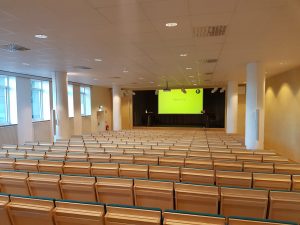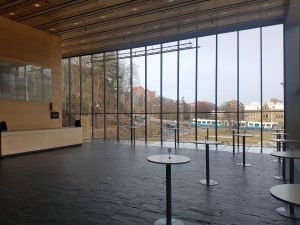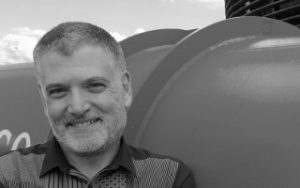Editing videos for foss-gbg and foss-north has turned into something that I do on almost a montly basis. I’ve tried a few workflows, but landed in using kdenlive and, when needed, Audacity. I’m not a very advanced audio person, so if kdenlive would incorporate basic noise reduction and a compressor, I stay within one tool.
Before I describe the actual process, I want to mention something about the hardware involved. There are so many things that you can do when producing this type of contents. However, all the pieces that you add to the puzzle is another point of failure. The motto is KISS – Keep It Simple Stupid. Hence, we use a single video camera with an integrated microphone. This is either an action cam, or a JVC video camera. In most cases this just works. In some cases the person talking has a microphone and then we try to place the camera close to a speaker. It has happened that we’ve recorded someone whispering just by the camera…
As we don’t have a dedicated microphone for the speaker, we get an audio stream that includes the reaction of the audience. That is in my opinion a good thing. It captures the mood of the event. However, we also get quite a lot of background noise which is bad. For this, I rely on this workflow from Rich Bowen. Basically, I extract the audio stream from the recording, massage it in Audacity, and then re-introduce it.
I’ve found it easier to cut the video prior to fixing the audio. This usually means find the start and the end of the talk, but in some cases it is more complex. E.g. removing parts of the Q&A due to reasons, or cutting out a demo that makes no sense when watching the video.
Once in Audacity, I generally pick out a “silent” part of the recoding to learn a noise profile. I then apply a noise reduction effect to the entire recording. This commonly produces a somewhat distorted sound (like if spoken into a can), but the voice of the speaker comes across nicely. After that, I usually apply a compressor effect to balance the loud and quite parts better. I’ve noticed that speakers often start out with a loud voice, and then softens the voice during the talk. For such cases, the compressor helps. It also helps balancing the sound level during Q&A where the audience might be quite or loud compared to the speaker depending on the layout of the venue.
Once the video and audio are cut and filtered, we need some intro and exit screens. I create these using LibreOffice Impress. I have created a template for the title page with the title of the talk and the name of the speaker, followed by a slide with room for the sponsor logo. This has a white background as logos mix badly with the crazy yellow colour of foss-gbg. Finally there is an exit slide which just says foss-gbg.se. I then export the slides to pdf and use ImageMagick to create pngs from them. Since I’m lazy, I just produce huge pngs that I mogrify to the right size. The entire flow looks like this:
libreoffice --headless --convert-to pdf slides.odp
convert -density 300 -depth 8 -quality 85 slides.pdf slides.png
mogrify -resize 1920x1080 slides*.png
The very last step of the process is to overlap the intro and exit screens with the start and end of the video in a good way. I mix this with fading the audio in and out. The trickiest is fading in, as it is nice to hear the first words of the speaker but you don’t want the noise from the audience. I’ve found that no matter what, you need to fade in the sound, even if the fade only lasts for a fraction of a second. Fading out is easy as things usually ends in an applause.
Then it is all about clicking render, remembering to change the name of the output file and uploading to the foss-gbg YouTube channel.




